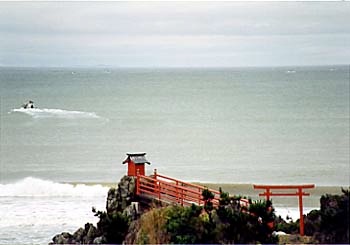

































Soon you begin to see how different Hokkaido is from the other Japanese islands: corn and other vegetable fields instead of rice paddies, as well as pastureland and wide, wide open spaces. A cute roadside sign with a picture of a cow and farmhouse said in English "I LIKE ROAD" - and although I might not feel that way about most of this section of the route, as regards this one area I would have to agree.
The Onuma area is onsen heaven, so you should arrange to visit a hot springs or two if time permits. You'll need it - next up is the only painful part of this route, the coastal road (Route 5) up past Onuma to the Toya-ko and Shikotsu-ko lake district. It's the only road leading there from Onuma, and on my visit it was choked with cars, many of which were the 4WD "back to nature" vehicles that spew out an appalling quantity of pollutants onto said nature. Since cyclists double as unofficial air pollution monitors, I was able to confirm for myself that automobile exhaust emissions devices in Japan still have a long way to go... But the fumes didn't diminish the pretty scenery, which included this tiny seaside shrine. (A train line parallels the road, so this might be one time that you might want to bag and bike it rather than pedal and perspire...)